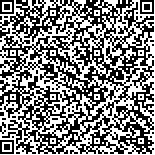下载中心
优秀审稿专家
优秀论文
相关链接
摘要

作为多通道合成孔径雷达(SAR)的一种高效便捷的抗干扰方法,SAR多通道对消技术可有效抑制包括散射波干扰在内的多种干扰类型,于是提出采用方位向余弦调相散射波干扰方法来对抗SAR双通道对消的干扰抑制能力。该方法通过对传统散射波干扰慢时间域进行余弦调相,不仅实现了干扰信号的方位向扩展,更使得干扰信号到达各通道之间的相位关系发生严重改变。这种相位差变化会影响干扰对消过程中的自动相位搜索环节,扰乱对消时所需补偿相位的估计结果,进而严重破坏对消后的真实场景成像。以SAR双通道对消系统为例分析了该干扰方法的影响效果,理论分析与实验结果表明:余弦调相散射波干扰可使得补偿相位的估计结果在慢时间上近似正弦分布;在双通道对消成像中,该干扰使得真实场景在方位向上被重复搬移,造成严重的影像重叠,同时在方位向上伴随着密集的明暗条纹;干扰效果可通过设定余弦调制频率、调制指数等参数进行控制。
The development and application of the multi-channel Synthetic Aperture Radar (SAR) have greatly enhanced the information acquisition and anti-jamming capabilities of the imaging radar and led to its development direction. Compared with the traditional SAR, the multi-channel SAR can extract more useful information from the phase of echo signals and has a higher degree of freedom. As one of several types of mature multi-channel techniques, SAR multi-channel cancellation technique can suppress various kinds of jamming signals, including scatter-wave jamming signals, by using the phase relation of jamming signals received by different channels, making it an efficient and direct type of anti-jamming method. In the process of multi-channel cancellation, the phase difference of jamming signals reaching different channels can be generally estimated by the automatic phase searching algorithm, and then the phase difference is used for compensation to finish the jamming signal cancellation. At present, regardless of the channels distributed along the track or across the track, multi-channel SAR systems can employ this anti-jamming technique. However, jamming technology against multi-channel cancellation has rarely been researched. Therefore, a cosinusoidal phase-modulated scatter-wave jamming method aimed at countering the multi-channel cancellation technique is proposed in this paper.
First, multi-channel cancellation theory of traditional scatter-wave jamming is analyzed through the dual-channel cancellation technique, and the process of automatic phase searching algorithm based on the rule of minimum energy is summarized. Second, the cosinusoidal phase-modulated signal model is presented and used to improve the traditional scatter-wave jamming signal. Cosinusoidal phase modulation in slow time directly leads to the Doppler spectrum moving and the extension of jamming in the azimuth, according to which the imaging characteristic of the novel jamming signal for SAR is analyzed in detail. Then, the effect of the proposed jamming method working on the dual-channel cancellation system is derived and analyzed. Cosinusoidal phase modulation severely changes the original phase difference, which exerts an effect on the automatic phase searching link to alter the estimated results of the compensation phase in the cancellation process. The changed compensation phase will seriously destroy the real scene imaging. Finally, the simulation experiment results and analysis are presented in which four groups of jamming parameters are set and compared to verify the controllability of jamming.
Theoretical analysis and experiment result show that the proposed jamming method can produce multiple false scattering scenes in traditional SAR imaging. In the dual-channel cancellation process, this method causes the estimated compensation phase to vary with slow time sinusoidally. It also causes the real scene image to move repeatedly, which leads to serious image overlapping and produces many dark and bright speckles distributed along the azimuth. The jamming effect can be controlled by setting different jamming parameters, such as modulation frequency and so on.
The proposed jamming method is flexible, controllable, and has good stealthiness. It can deactivate the multi-channel cancellation jamming suppression and enhance the jamming effect by utilizing the characteristics of the cancellation process. Importantly, the jamming signal after phase modulation in the azimuth can influence the extraction result of phase information of the signal received by the multi-channel SAR system. Such effect can provide additional ideas and methods for multi-channel SAR jamming research.

